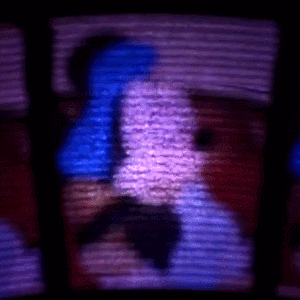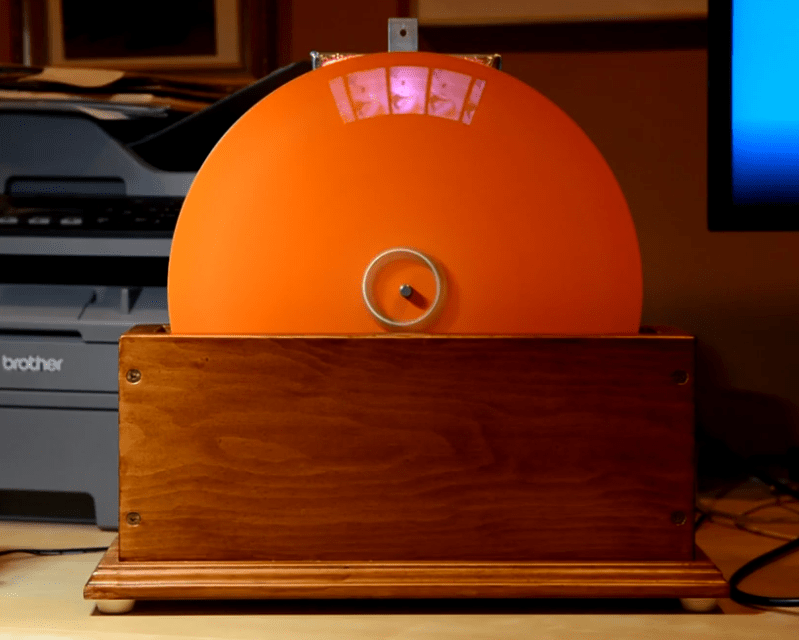
The earliest televisions used a spinning disk technology called the Nipkow disk, which is exactly what [Science ‘n’ Stuff] recreated with their Arduino-based mechanical color television (video link, also embedded below.) The device reads video and audio from an SD card, and displays the video using a precisely-timed RGB LED visible through a perforated spinning disk. The persistence of vision effect results in a video that is small, relative to the size of the disk, but perfectly watchable. A twist is that the video is in color!
A Nipkow disk is a fairly simple and electromechanical device that relies on timing; something a modern microcontroller and RGB LED is perfectly capable of delivering. In this device, the holes in the disk create 32 vertical scanlines with 96 “pixels” making up each of those lines. Spinning disk technology was always limited to being monochromatic, but in this implementation, each “pixel” is given its own unique color by adjusting the RGB LED accordingly.
The first video shows off the device and demonstrates it working; note that it may look like there are multiple little screens, but the center one can be thought of as the “true” display with the others essentially being artifacts due to light leakage. If you’re interested in the nuts and bolts of exactly how a Nipkow disk works, then the second video is what you’ll be more interested in, because it goes through all the details of exactly how everything functions.
Another neat thing about Nipkow disks is that image acquisition is really not much more complex than image display.
[via Arduino Blog]

















>Believe it or not
I don’t have to, because it isn’t. The copyright for “Steamboat Willie” expires in 2024 and this is a color clip, so it must be later production which is STILL under copyright for far longer.
https://arstechnica.com/tech-policy/2019/01/a-whole-years-worth-of-works-just-fell-into-the-public-domain/
Basically, if Mickey’s got white gloves on and his pants are red, it’s still copyrighted.
Mickey’s Surprise Party, the clip in this video, is one of the only colour clips of mickey that is in the public domain. This was explained in the featured video. You can read more here: https://en.wikipedia.org/wiki/Mickey%27s_Surprise_Party
No citation given. I can’t find any primary source for the info.
Stasi called and wanted their radiator pickup mic back.
Wow, excellent work! What a fun project!
Ideally you would want a lens in front of the LED to make the hot spot the same size as the viewing area and a baffle to block the light from going outside the viewing area. Then the diffusion becomes much simpler and wastes much less light. You can just use a piece of tissue paper for the diffuser and have a much brighter image. The light baffles would eliminate the ghosted images on either side of the primary one.
You could mount that led into a flashlight base that includes a lens and tape the light blocking baffles to the outside.
regarding “Spinning disk technology was always limited to being monochromatic”
Hmmm… let me put that in perspective. If you mean that mechanical television in color for the main public never took off then you are correct. However, it certainly was possible at the time. The first demonstration was done in 1928, basically 2 years after the first successful demonstration of monochromatic television.
Below a link to a PDF document that has some info on page 9 regarding the subject. And lots of other interesting info too.
https://nvhrbiblio.nl/biblio/tijdschrift/Television/1928/Television%201928-06-OCR.pdf